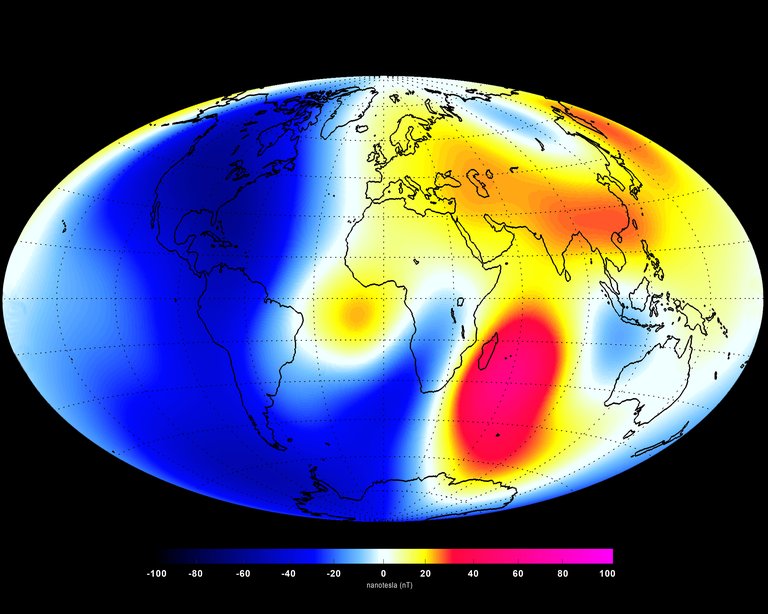Satellites see Earth's magnetic field weakened

“According to data obtained in the last six months by the constellation of Swarm satellites, the Earth’s magnetic field is weakening.” He has been the most prominent media headline of the ESA working meeting held in Copenhagen in June, but some other type could also be taken out, for example: “The Earth’s magnetic field has weakened in the West, while the Indian Ocean has strengthened.” And another third could be possible: “The magnetic North Pole moves towards Siberia.”
Behind all these headlines or titles is the study conducted in the last six months by the three satellites of the Swarm mission. The three satellites were put into Earth orbit in late November 2013, at two heights of 460 kilometers and the third at 530 kilometers from Earth. The aim of the three satellites is to observe the Earth, taking geo-magnetic data with great precision. They want to investigate the magnetic field, see how it is created, how it changes, how the solar wind affects and how it relates to climate change. And the magnetic field that extends from the core of the Earth to the magnetosphere, protects us from solar and cosmic radiation, so it is essential for life.
According to experts gathered in Copenhagen, an investment in the Earth's magnetic field will take place between 5,000 and 10,000 years. It will not be the first time in the history of our planet, the last investment occurred 780,000 years ago.
From the results of the mission, ESA scientists have stated that satellite work has been excellent, but that from their data it is still too early to draw general conclusions. In fact, if the objectives are met, the three satellites will remain in terrestrial orbit for four years.In later studies they will also observe the mantle of the Earth, the Earth's crust, the oceans, the ionosphere and the magnetosphere.
Buletina
Bidali zure helbide elektronikoa eta jaso asteroko buletina zure sarrera-ontzian











